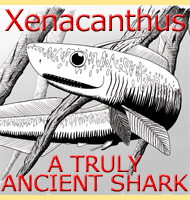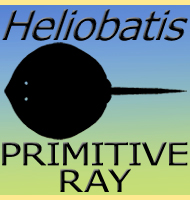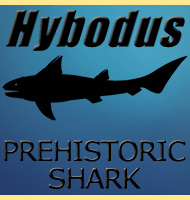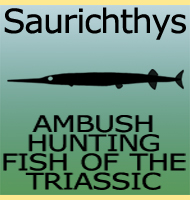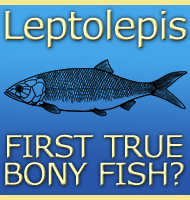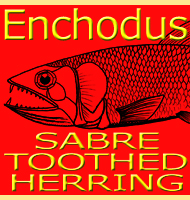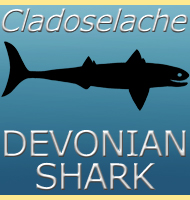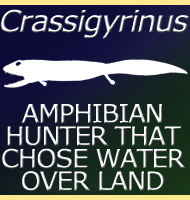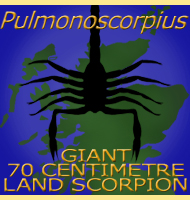


Gyroptychius

Name:
Gyroptychius.
Phonetic: Gry-op-tie-ke-us.
Named By: F. M’Coy - 1848.
Synonyms: Glyptolepis microlepidotus.
Classification: Chordata, Sarcopterygii,
Coelacanthiformes.
Species: G. agassizi, G.
microlepidotus.
Diet: Carnivore/Piscivore.
Size: About 30 centimetres long.
Known locations: Scotland.
Time period: Mid Devonian.
Fossil representation: Few specimens.
Gyroptychius was a streamlined lobe-finned fish that is so far known from Western Europe, specifically Scotland. Like with many of its relatives, Most of the fins on Gyroptychius were situated more towards the rear of the body (with the exception of the pectoral fins, an arrangement that would have increased the ability of the tail to push against the water and propel the fish forwards. Like many other genera, Gyroptychius is also noted as having short jaws. These jaws meant that Gyroptychius had a higher bite force, not by physical strength of the muscles, but because the force of the jaw closing muscles were nearer the point of jaw articulation. The principal of this is the same as if you use a pair of long nose pliers, using just the tips allows you to reach things, but placing things near the point of articulation allows you to more easily crush things.
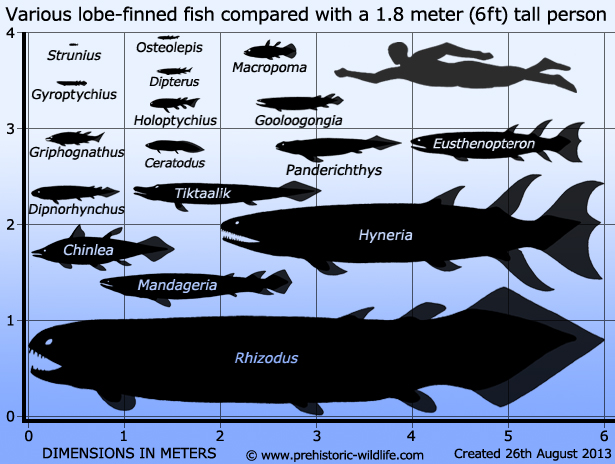
More information on the above fish can be found on their corresponding pages; Ceratodus, Chinlea, Dipnorhynchus, Dipterus, Eusthenopteron, Gooloogongia, Griphognathus, Gyroptychius, Holoptychius, Hyneria, Macropoma, Mandageria, Osteolepis, Panderichthys, Rhizodus, Strunius, Tiktaalik (upper estimate).
Further reading
- Gyroptychius (Rhipidistia, Osteolepidae) from the
Middle Devonian of
Scotland - Annals and Magazine of Natural History Series 13 - Keith
Stewart Thomson.
----------------------------------------------------------------------------
Random favourites
 |
 |
 |
